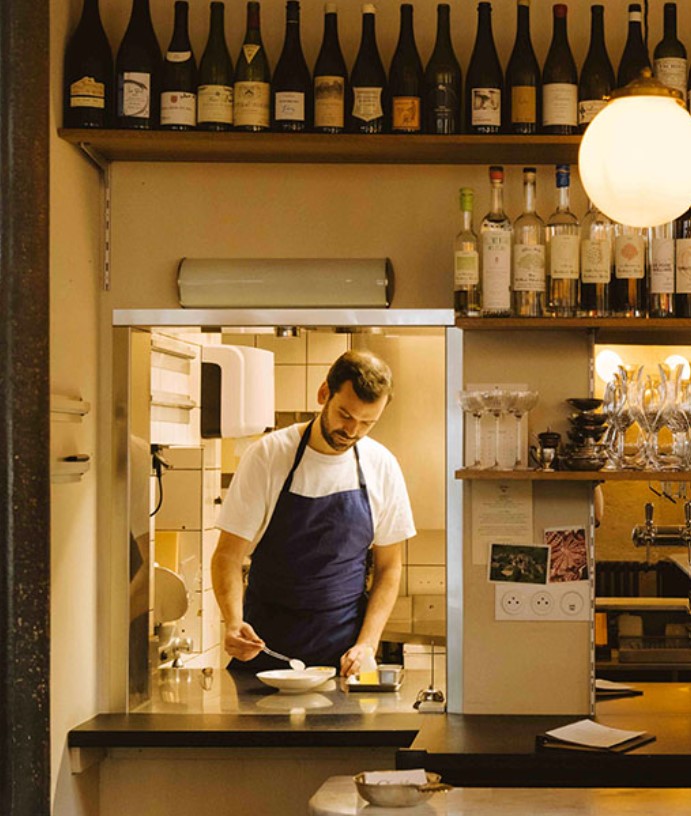Indian food is incredibly flavourful, scrumptious, satisfying and loved by many across the world. The thought of an Indian restaurant immediately brings to mind crisp, handmade, buttered breads soaking up slurp-worthy curries, succulent and spicy kebabs, aromatic biryanis and flavors galore.
Don’t you just really want some right now? Well, before you dash out the door to satisfy those Indian food cravings, here are three things you need to know to order like a pro.

1. Not all breads are equal
Before you order “naan bread”, please note that naan is a type of bread, so that would be like saying “baguette bread,” which is, well, a little repetitive. Instead, you want to get to know the most popular kinds of Indian bread and understand their differences.
- Tandoori roti is made with whole wheat flour; after baking, it’s generally quite crisp and consumed unbuttered. It is one of the healthier of restaurant Indian bread options. Chapati is a thinner, lighter version of roti but is typically homemade, and not generally found in restaurants.
- Naan is made with white flour and is soft, thick and doughy. Naan is generously buttered (butter naan), but you could also order a plain naan if you’re feeling calorie conscious. Garlic naan or cheese naan are delicious variations of naan but may conflict with your curry flavors. By the way, children love cheese naan.
- Paratha, made with whole wheat flour, is usually layered, slathered with ghee, and stuffed with potato or cheese. Parathas are delicious but probably the least healthy of your bread options (if you care about that sort of thing). Laccha paratha is a sinfully scrumptious layered bread, and highly recommended if you haven’t tried it before.
- Another popular favourite, though sadly not available in many Indian restaurants outside of India, is the roomali roti, an ultra-thin, handkerchief-like bread (roomal means “handkerchief” in Hindi) that goes extremely well with chicken tikka masala or butter chicken.

2. Three balanced courses are best
Indian meals are typically consumed in three simple courses: appetizers (Indians like to call them “starters”), mains and desserts. If the multiple sections in the menu leave you terribly confused, don’t worry: it's easier than you think.
For your first course, you want to focus on tandoori items and kebabs. Look under the grill/tandoori section and also make a few selections from the appetizers/starters category. Remember that Indian food is eaten family-style, which means it’s meant to be shared. You should order one to two appetizers per person. The mixed tandoori platter is often a great choice if you want to try a variety of kebabs and you can't wrong with some aloo tikki (potato patties).
For mains, order an assortment of breads (see point 1) plus a “non-vegetarian” (Indians love this term) dish, a vegetable dish, a daal (lentils) and a rice dish. You may also want to order a side of papad, which adds some crunch and texture to the meal, and some raita, a yoghurt-based sauce that helps to cool the palate.
For dessert - and by this point you will be absolutely stuffed, especially as traditional Indian desserts are typically super heavy and rich - you might want to continue on in sharing mode to allow yourself to sample popular favourites like gulab jamun (fried dough balls dunked into cardamom-flavored sugar syrup), kheer (milk-based pudding) and jalebi (more sugary, fried, ghee-dunked delights). Ice cream is always welcome and helps to cool the belly.

3. Know thy lingo, love thy sides
Don’t let unfamiliar words on the menu scare you. Here are some commonly used terms:
- Tadka means “tempering”, or the simple act of adding spices to hot ghee to create a flavourful concoction that adds oomph to the lentils. Therefore, daal tadka is simply a yellow lentil dish that has been beautifully flavored and tempered.
- Jeera rice is good old basmati rice cooked with some cumin seeds and ghee for extra nuttiness, flavor and texture.
- You can never ever go wrong with ordering butter chicken (or anything that begins with the word “butter,” for that matter) or chicken tikka masala. This is like ordering pasta at an Italian restaurant: just do it.
- Paneer is Indian cheese, which is often dunked into spinach sauce and known as palak paneer or saag paneer.
- You will see the word “masala” thrown around a lot. Masala means “spice,” so any dish with masala in it (for example, bhindi (okra) masala, masala chai, channa masala) will be beautifully spiced and delicious.
- Know your accompaniments—Indians love their onion, lime, pickle, chutneys and papad. These are special items you need to order to create the real-deal experience.
Of course, every Indian restaurant will have a different menu and varied offerings, not to mention the regional variances in cuisine and dishes but nonetheless, the joy of Indian dining is all in the spiced-up details. So sit back, take ahold of that menu and throw out all your newly acquired knowledge with gravitas and flair.




















